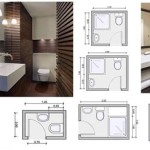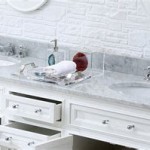How To Remove Grout From Bathroom Tiles
Removing grout from bathroom tiles can seem daunting, but with the right tools and techniques, it can be a manageable DIY project. Whether prepping for regrouting or tackling stained and damaged grout, this guide provides a comprehensive approach to grout removal.
Assessing the Grout Condition
Before beginning any grout removal, it is crucial to assess the grout's condition. This assessment informs the appropriate tools and methods. Hard, brittle grout may require power tools, while softer, more pliable grout can be removed manually. The extent of the damage also influences the approach. Small areas with superficial staining may only require cleaning, while widespread cracking necessitates complete removal.
Gathering Necessary Tools and Materials
Having the right tools ensures efficient and safe grout removal. Key items include a grout saw, grout removal bit for a rotary tool (optional), utility knife, safety glasses, dust mask, vacuum with a crevice attachment, hammer and chisel (for stubborn grout), and a spray bottle filled with water.
Preparing the Work Area
Preparation is key to a successful grout removal project. Protecting adjacent tiles and fixtures with painter's tape prevents accidental damage. Ensuring adequate ventilation minimizes dust inhalation. Laying down drop cloths simplifies cleanup. These steps streamline the process and protect the surrounding bathroom environment.
Manual Grout Removal Techniques
Manual removal is suitable for smaller areas or softer grout. A grout saw, with its carbide tip, is a primary tool for this method. Carefully insert the saw's blade into the grout line and apply steady pressure, working along the line's length. Avoid applying excessive force, which could chip the tiles. Periodically cleaning the grout saw with a wire brush maintains its effectiveness. A utility knife can be helpful for scoring the grout before sawing, making the process easier.
Power Tool Grout Removal Techniques
For larger areas or particularly stubborn grout, power tools can significantly expedite the process. A rotary tool equipped with a grout removal bit offers greater efficiency. When using a rotary tool, maintain a low speed to prevent tile damage. Move the tool steadily along the grout line, avoiding prolonged contact in one area. Wear safety glasses and a dust mask to protect against debris.
Dealing with Stubborn Grout
Sometimes, grout proves extremely resistant to removal with saws or rotary tools. In these situations, a hammer and chisel can be employed. Use a narrow chisel and gently tap it along the grout line. Avoid striking with excessive force to prevent tile breakage. This method requires patience and precision. Soaking the grout with warm water for a few hours beforehand can soften it, making removal easier.
Cleaning Up After Grout Removal
Thorough cleanup is essential after grout removal. Begin by vacuuming the entire area to remove loose grout dust and debris. Use a damp sponge or cloth to wipe down the tiles, removing any remaining residue. Allow the area to dry completely before proceeding with regrouting or other planned work. Proper cleanup ensures a clean and professional finish.
Safety Precautions During Grout Removal
Safety is paramount during any grout removal project. Always wear safety glasses to protect your eyes from flying debris. A dust mask prevents inhalation of grout dust, which can be irritating to the respiratory system. Work in a well-ventilated area to minimize dust buildup. Take breaks as needed to avoid fatigue, which can lead to accidents. Understanding and implementing these safety measures minimizes potential risks.
Alternative Grout Removal Methods
Beyond manual and power tool techniques, other grout removal options exist. Chemical grout removers can soften the grout, making it easier to scrape away. However, carefully follow the manufacturer's instructions and ensure adequate ventilation when using these products. Steam cleaners can also soften grout, particularly for cleaning purposes rather than full removal. Consider these alternatives depending on the specific situation and the type of grout.
Choosing the Right Grout Removal Method
The optimal grout removal method depends on several factors. Consider the grout's hardness, the size of the area, and the available tools. Manual methods are suitable for small areas and softer grout. Power tools offer greater efficiency for larger areas and harder grout. Chemical removers and steam cleaners provide alternatives for specific situations. Assessing these factors ensures the chosen method aligns with the project's needs.
Disposing of Removed Grout
Proper disposal of removed grout is important. Collect the grout debris in heavy-duty garbage bags. Check local regulations for specific disposal guidelines, as some areas may have restrictions on construction waste. Avoid washing grout dust down the drain, as it can solidify and cause plumbing issues. Responsible disposal prevents environmental issues and plumbing problems.

How To Clean Grout In Your Shower Alpine Carpet Cleaning

How To Clean Mold In Shower Grout Tips And Tricks Certified Care

How To Remove Old Grout

How To Clean Grout Cleaning Stains

How To Regrout Bathroom Tile In 5 Easy Steps True Value

3 Top Secret Tricks For Cleaning With Vinegar Making Lemonade

How To Clean Bathroom Tile And Grout Reviews By Wirecutter

The Ultimate Guide To Cleaning Grout 10 Diy Tile Cleaners Tested Bren Did

How To Clean Grout In Shower Simple S Keep Your Bathroom Tiles Gleaming Express Co

How To Clean Bathroom Tile And Grout Reviews By Wirecutter
Related Posts







